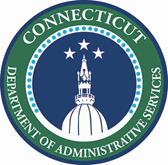Connecticut Gives Every Student a Computer and Home Internet to Close the Digital Divide – by Stephen NooNoo, EdSurge
Even before the pandemic, more than 25 million Americans lacked access to broadband internet. But even when they can get online, students of color and low-income families were more likely to share a single device. Today, when strong internet connectivity is all but required for learning, such gaps can serve as insurmountable barriers to learning.
The state of Connecticut thinks it may have found a straightforward solution to the problem: Give every student in grades K-12 a laptop and pay for their internet. And for the past few months, the state has quietly been rolling it out. Recently, the state announced that it had achieved near universal access for both device distribution and connectivity—a significant achievement in a state where 40 percent of households in some cities lack home access, according to census data.
“Once COVID broke out, it was very clear how much the achievement gap is exacerbated by inequitable access to good learning at home,” says Nick Simmons, the director of strategic initiatives for Gov. Ned Lamont, a former telecom mogul who founded Campus Televideo, a company that provided cable to college campuses. “The impetus was really to close that achievement gap and that digital divide.”
The program, known as the Everybody Learns Initiative, was funded primarily by about $43 million in CARES Act stimulus funding, diverted both to school districts to pay for devices and to local internet service providers. In March, a local nonprofit, Partnership for Connecticut, spent $24 million to buy laptops. In some areas, local philanthropy groups stepped up to pay for internet connectivity as well.



Colorado schools missing 29,900 students as pandemic disrupts education – By Erica Meitzer, Chalkbeat Colorado
Colorado schools lost more than 29,900 students — a 3.3% decline — compared with the last school year, according to preliminary state data released Tuesday. The drop in enrollment means schools could see funding cuts and raises concerns about the well-being of children who haven’t been seen or heard from in months.
Colorado typically releases official enrollment data in January, but due to the high level of interest this year, the state education department decided to release initial numbers in December. The preliminary enrollment numbers come from Colorado’s October Count Day, when districts tally the students in attendance to determine official student counts. If students don’t come to school or log in on that day, districts can use other methods to prove students really do attend their schools.
Reflecting a trend seen nationally during the pandemic, the biggest drops came in the early grades, with kindergarten enrollment declining more than 9%. The drop comes just one year after Colorado made full-day kindergarten free to families, spurring a 24% increase in enrollment. While this decline doesn’t entirely undo last year’s gains, advocates worry that young children are missing out on critical early learning opportunities. Kindergarten is not mandatory in Colorado.
Total enrollment in preschool through 12th grade is 883,281, according to preliminary data. With education disrupted throughout the state, the declines occurred in districts that started the school year with students in classrooms and those where students mostly learned from home. Of Colorado’s 178 school districts, 141 reported enrollment declines.

Two outsiders emerge as top contenders for Biden’s education secretary – By Laura Meckler and Valerie Straus – The Washington Post
Two lesser-known educators have emerged as top candidates for education secretary — a former dean at Howard University and the commissioner of schools in Connecticut, people familiar with the process said.
The first is Leslie T. Fenwick, dean emeritus of the Howard University School of Education and a professor of educational policy and leadership. The second is Miguel Cardona, who last year was named the top education official in Connecticut.
Both have positions that could draw fire, though in different ways. Fenwick is a fierce critic of many attempts at education reform, including some touted by President Barack Obama’s Education Department. Cardona has promoted a return to school buildings during the pandemic, saying it is imperative to get children back to face-to-face learning.
The situation remains fluid, and no decisions have been made. Three people familiar with the process said the transition committee is focusing its attention on these two candidates at the moment. Another person cautioned that others are in the mix. All four spoke on the condition of anonymity to discuss internal conversations.

Long sought after ’cradle to career’ education data system for California comes with hefty price tag – By Loiuis Freedberg, EdSource
One of the few notable areas where Gov. Gavin Newsom departed from his predecessor Gov. Jerry Brown on entering office was his support for establishing a longitudinal data system linking information from preschool into the workplace.
Despite the fact that most other states had created that system in some form, for years Brown resisted entreaties from researchers and advocates to allocate the funds to set one up.
But it was such a high priority for Newsom that, within days of taking office in 2019, he called for it in the second paragraph of his first budget as governor. He designated an initial $10 million for “critical work” to create what he called “the California Cradle-to-Career Data System” in order to “to better track student outcomes and increase the alignment of our educational system to the state’s workforce needs.”
Newsom’s push resulted in 2019 legislation (Senate Bill 75) that kicked off a year of intense planning. It involved nearly 200 data experts and representatives of all key education institutions in the state, and has culminated in a report that will be sent to Newsom this week, after it gets final approval from the work group overseeing the project. Spearheading it is a work group made up of representatives of 16 different institutions and agencies involved with the establishing the data system.












